Census of an NFL Roster

Connor Mount, Zach Marcus and Gabe Fernandez contributed data research to this project.
ENGLEWOOD, Colo. — These are the results of a survey of one NFL team’s locker room over the course of the 2016 season. Topics ranged from family wealth to voter participation to concussion history. Of the 51 Denver Broncos players who responded, only one player asked to know the intent of the survey before answering the questionnaire.
Said a vaguely annoyed Russell Okung: “What, exactly, are you trying to prove?”
There’s a familiar refrain in NFL reporting that seems to crescendo whenever controversy of a non-football variety is introduced into the dialogue. “Well,” says the player, “the NFL locker room is the most diverse place on earth.” Players use it as a catch-all when asked by a reporter if another player’s politics or sexual orientation are a distraction.
So, in coming up with the following questions, we sought to test the theory: Just how diverse is an NFL locker room, in identity, thought and experience? And how does the makeup of a roster differ from that of the U.S. population as a whole?
Editor’s Note: Not all players pictured in the story’s lead art participated in the survey.
* * *
CHILDHOOD
Players were asked to rate their household prosperity while growing up, on a scale of 1 to 5 (1 being lower class, 2 lower-middle class, 3 middle class, 4 upper-middle class, 5 upper class; none of the players surveyed answered “5.”) Ninety-five percent of the non-white players reported growing up in middle-level income or lower households. Eighty-six percent of white players reported growing in middle-level income or higher households. Seven of nine offensive linemen grew up middle class or higher.
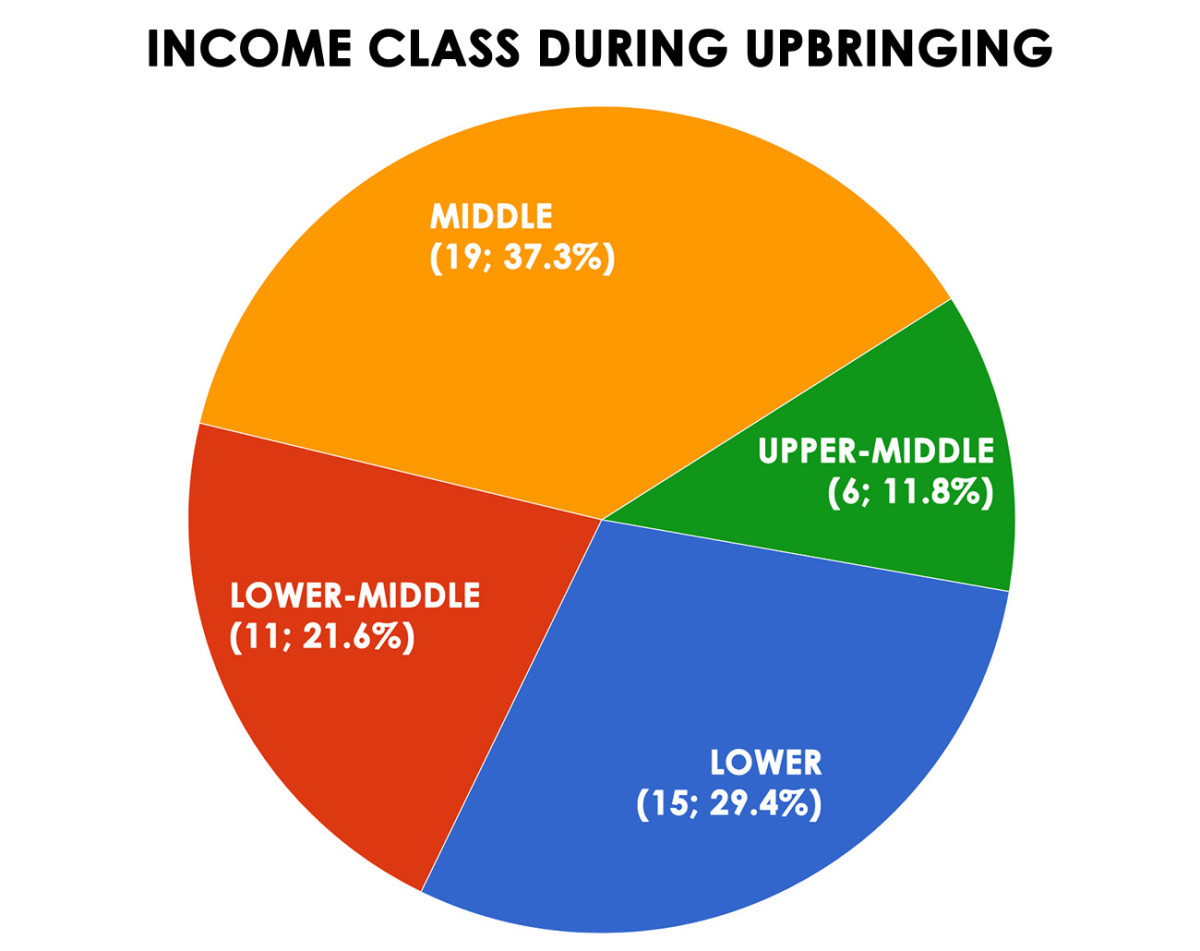
Seventy-one percent of the white players said their parents had college degrees, whereas only 56.8% of non-white players reported that their parents received the same education. The gap widens with each generation; 28.6% of the 14 white players had great grandparents with degrees but only 18.9% percent of the 37 non-white players have grandparents with degrees, while only 5.4% have college-educated great grandparents.
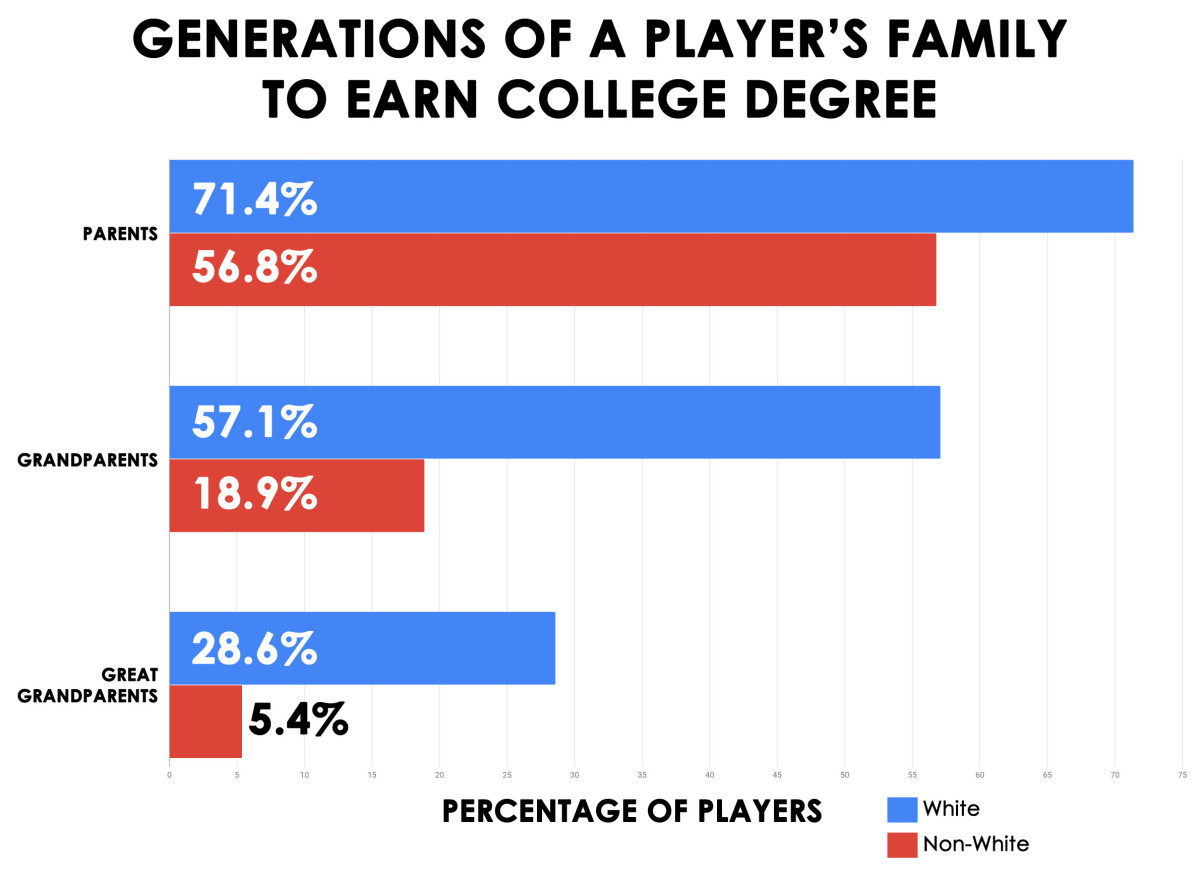
According to the 2015 census, 27% of the U.S. adults 65 or older claimed a bachelor’s degree or higher. That number rises to 36% for adults aged 25 to 34 years old and 32% for adults aged 45 to 64.
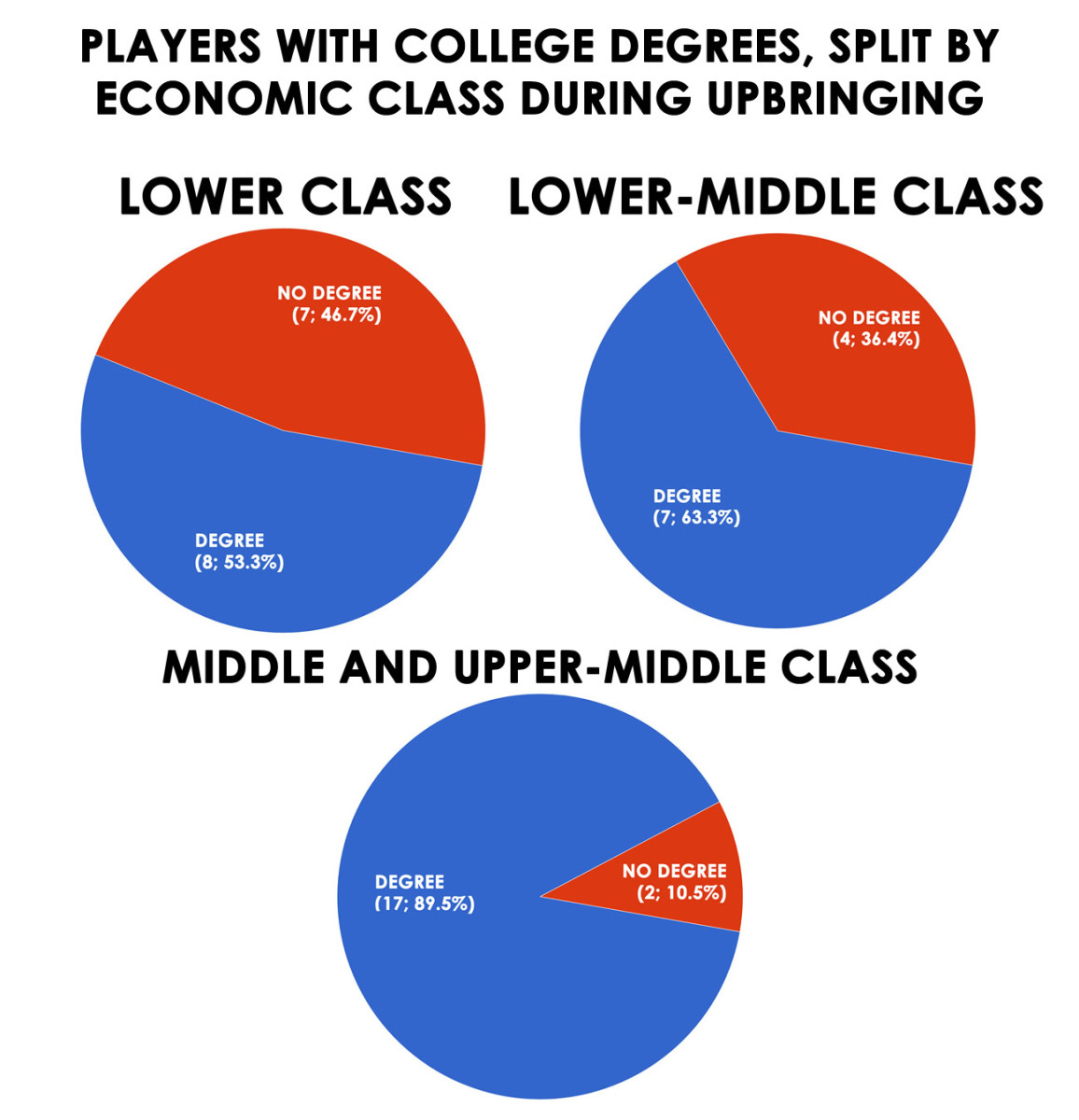
* * *
FOOTBALL
17 of 51 players (33.3%) reported never having a concussion. Defensive backs (15.7 years old) were younger than linebackers (19) at the time of their first concussion.
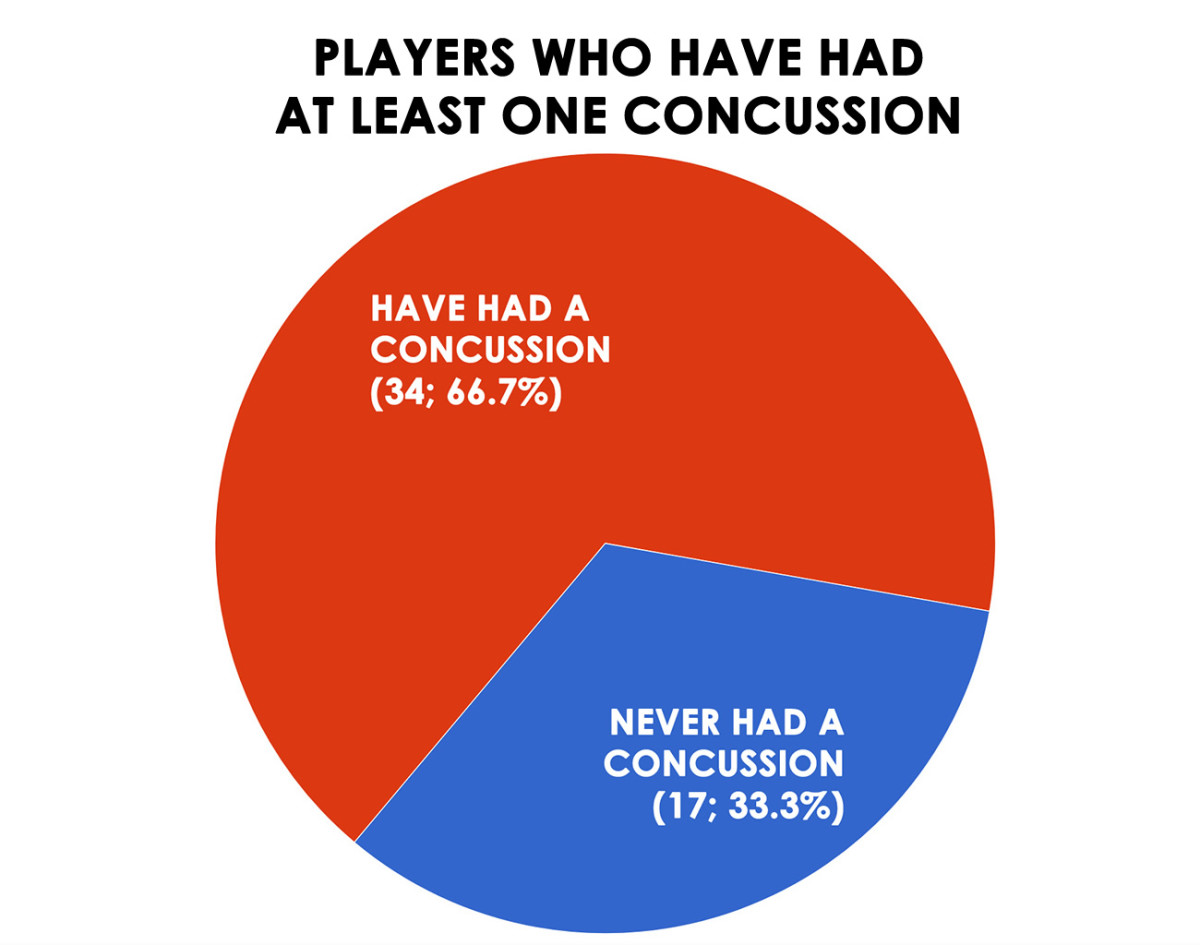
A 2013 analysis of various head trauma studies found that high school football players reportedly suffer 11.2 concussions for every 10,000 games and practices. Inside linebacker Todd Davis, who was credited with precisely 500 tackles from his junior season of high school to his final year at Sacramento State, felt lucky to have never suffered a traumatic brain injury. "I don't know how I avoided it," Davis says. "I've been in plenty head-to-head collisions but always came out clear-headed. I think I've just been blessed."
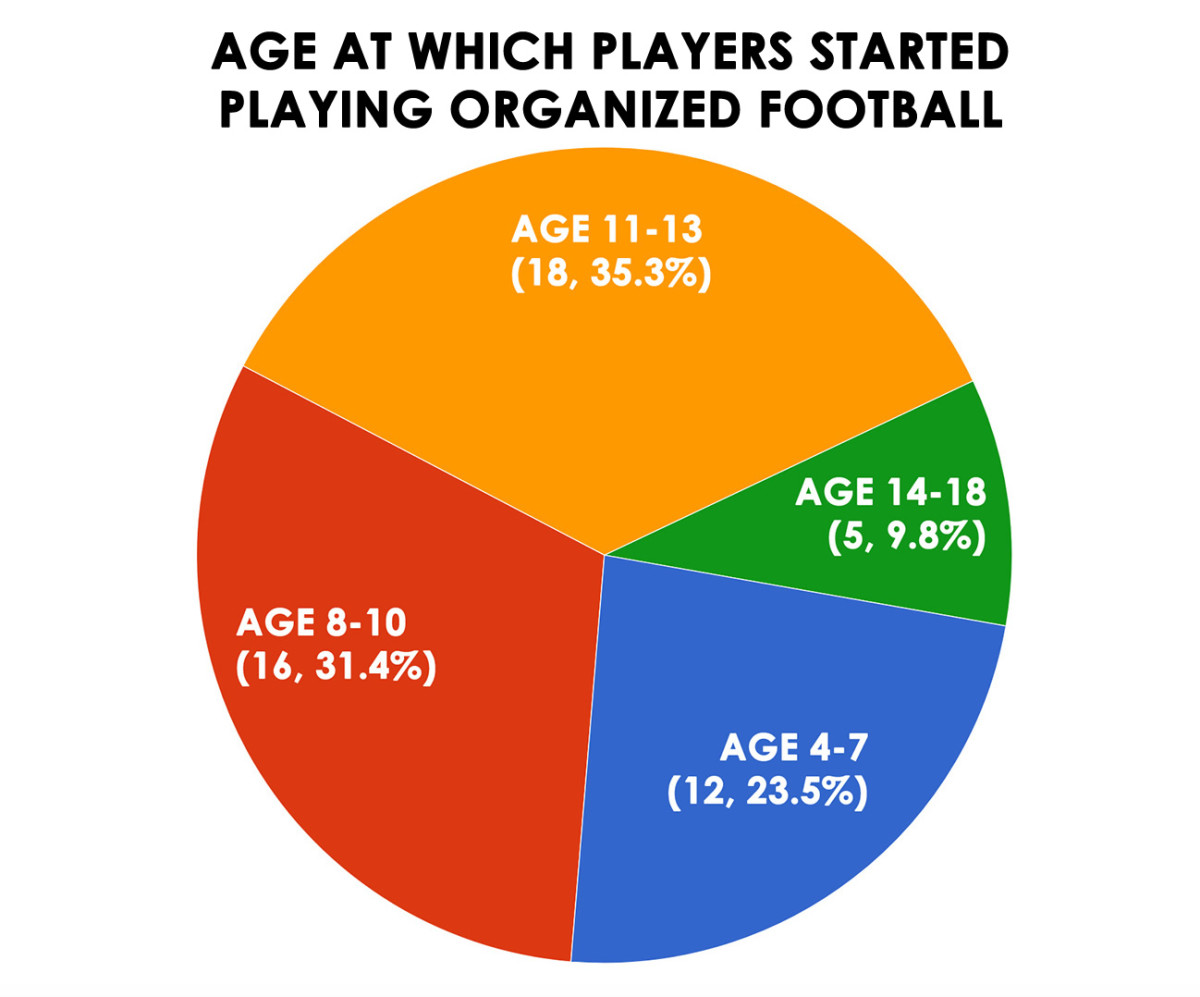
* * *
EDUCATION
The 29 black players surveyed received approximately 517 scholarship offers (17.8 per player), while 14 white players received 100 total offers (7.1 per)—the median number for all players was eight. The largest percentage of players (37%) received between zero and five scholarship offers. Seven players received zero offers.
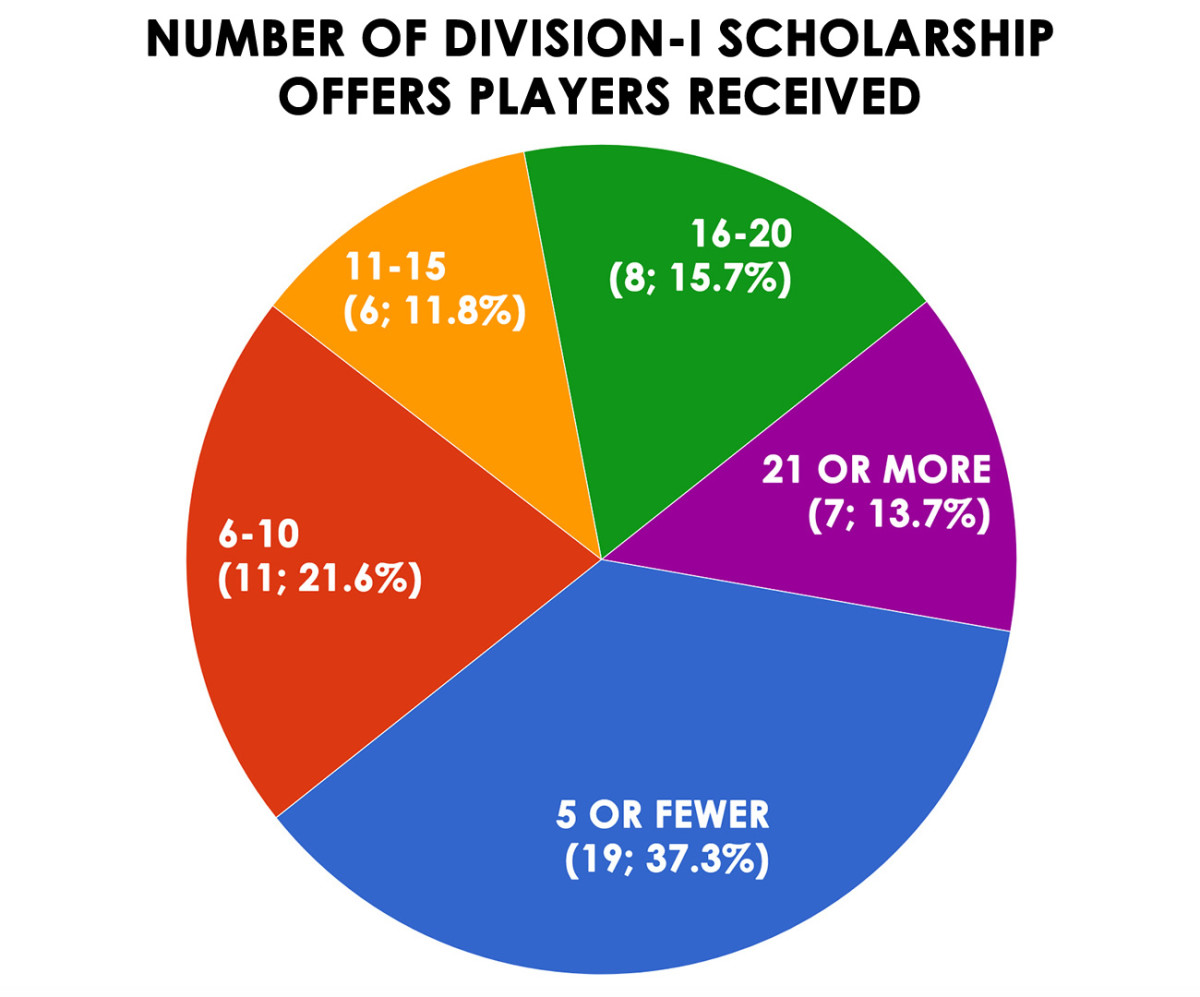
Statistics show that 2.6% of high school football players go on to play Division I. in this survey, players with few (or no) D-I scholarship offers (between zero and five) were more likely to have their degree when compared to those who received scholarship offers in double-digits.
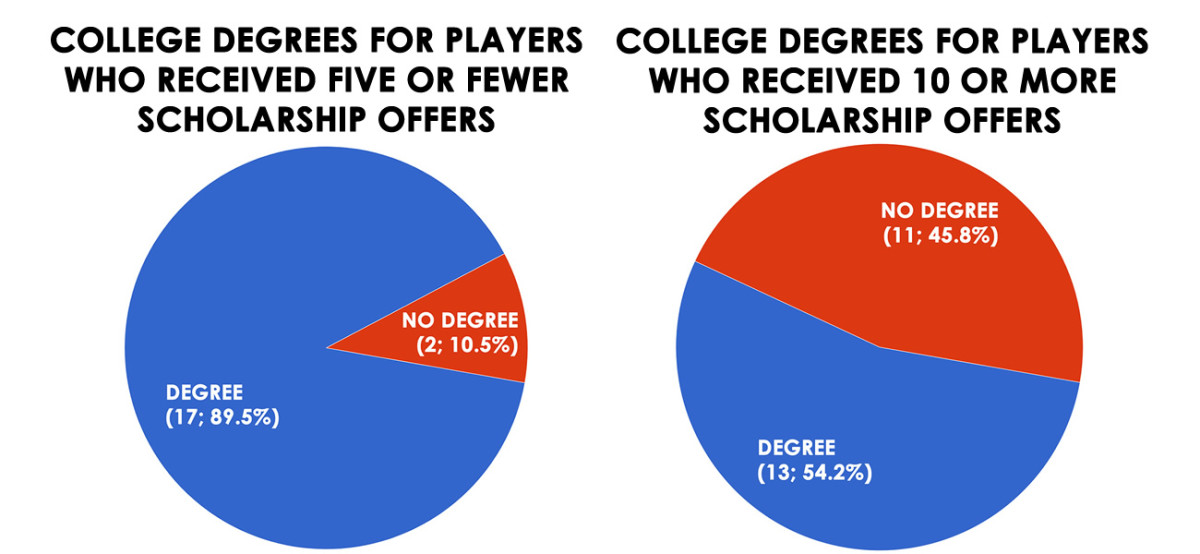
According to Census Bureau information, as of 2015 more than a third of Americans held a four-year college degree, a U.S. record. That number includes 37% of white Americans; 23% of African Americans and 16.4% of Hispanic Americans. Fifty-nine percent of the black players on the Broncos have received their degree (the number for non-white players as a whole was 64.9%), compared to just 17% of black males nationwide. Eighty-six percent of the white players on the team have received their degree; nationwide, the number for white men is 33.8%.
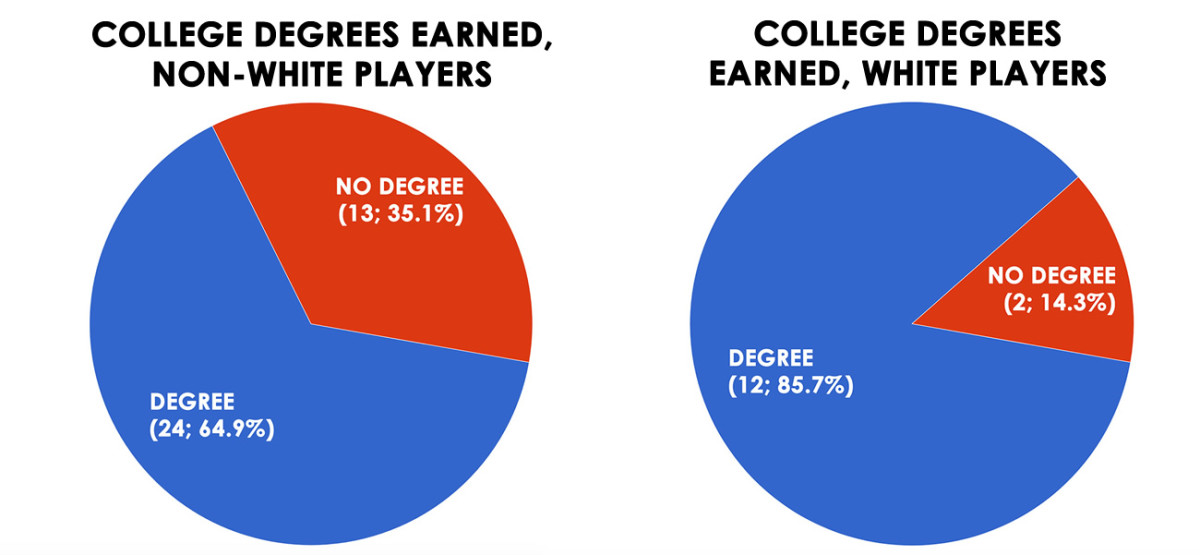
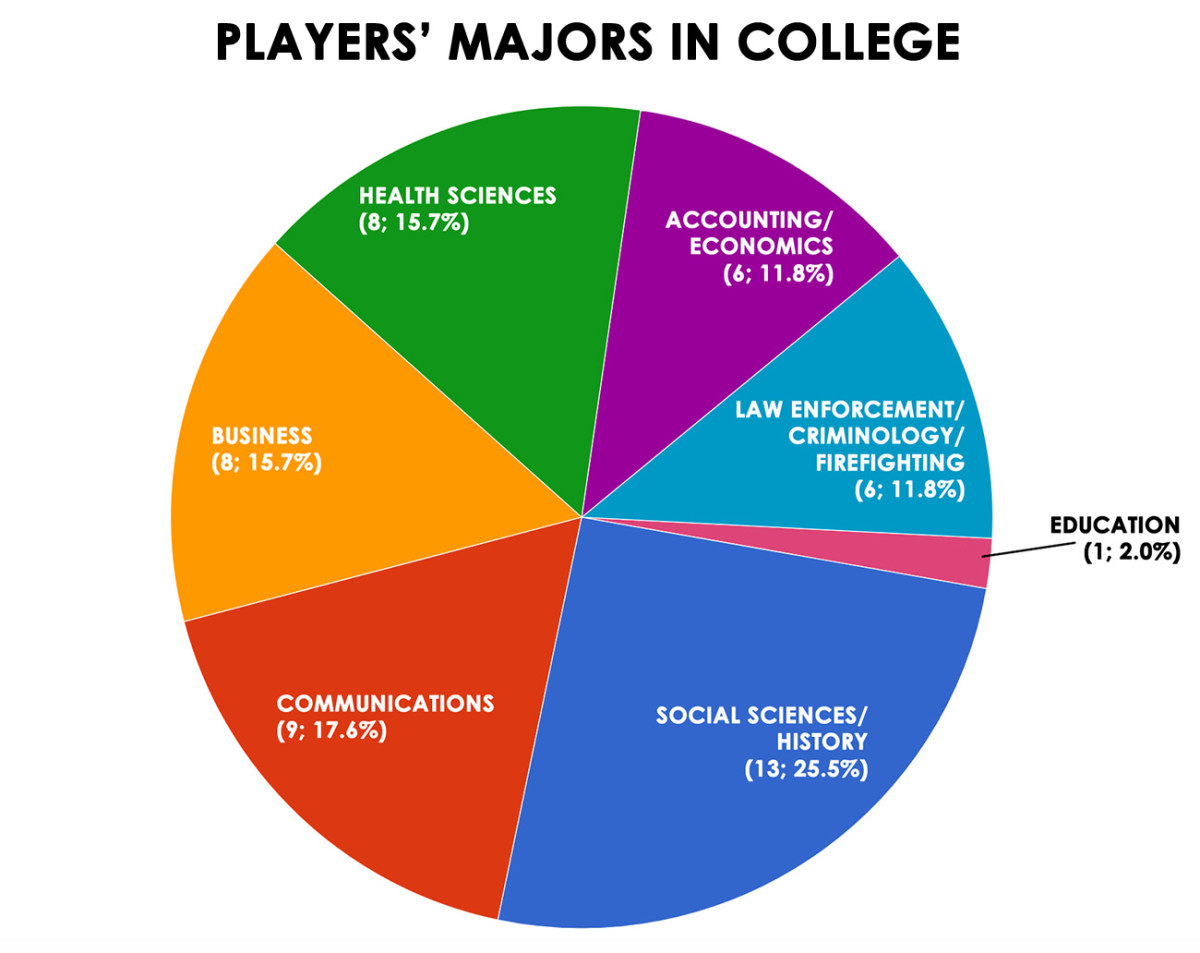
* * *
HOME/FAMILY
Of the players surveyed, 33 rented homes, and 18 owned. Starters have a higher average number of kids than backups (0.625 to 0.3714).
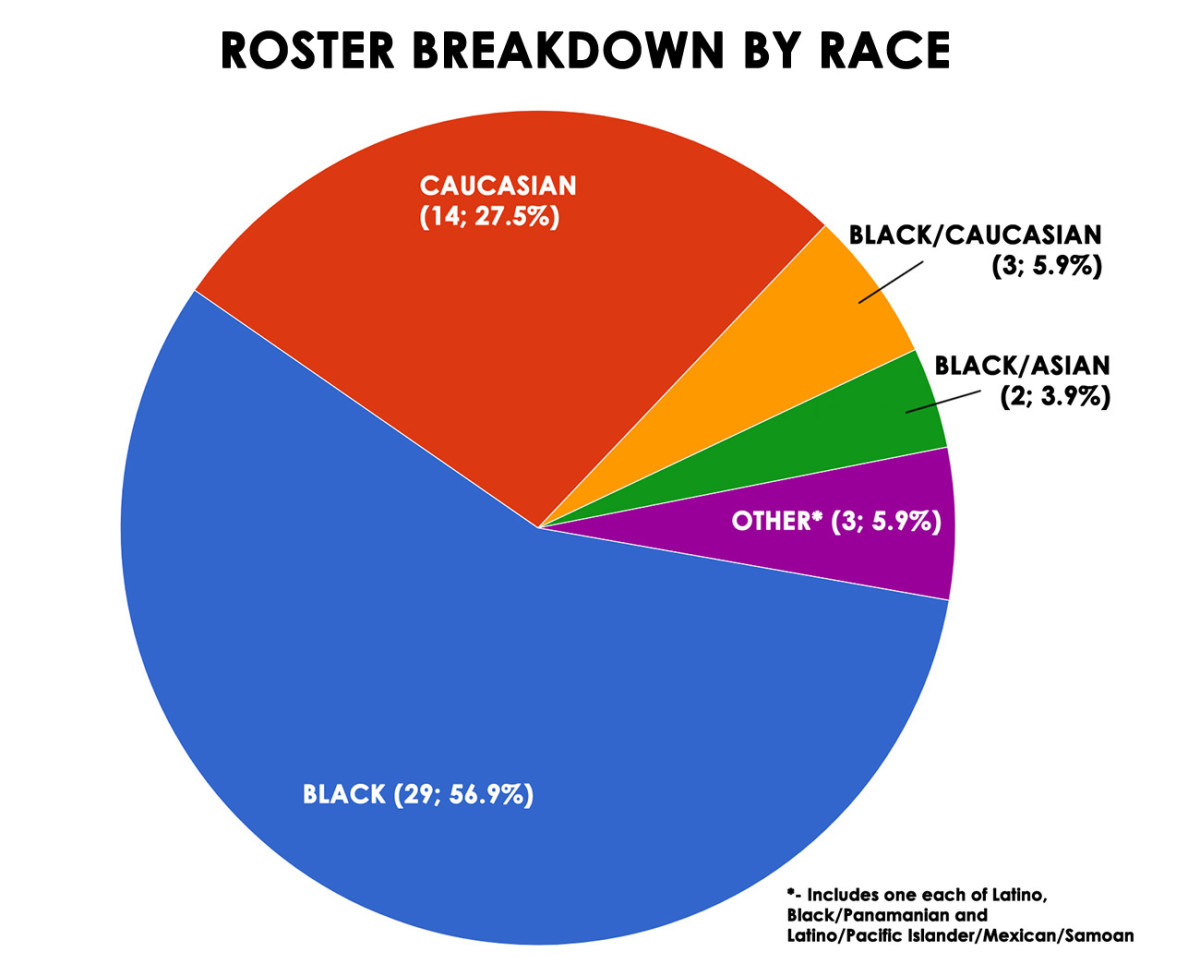
* * *
POLITICS/RELIGION
Approximately 60% of eligible voters in the U.S. cast ballots in the 2016 presidential election. Broncos players voted at a rate of 33.3% overall, and an overwhelming majority of black players—22 of 29—didn't vote in the last presidential election. Players with college degrees voted at a rate of 41.7%, while only 13.3% of those without degrees voted.
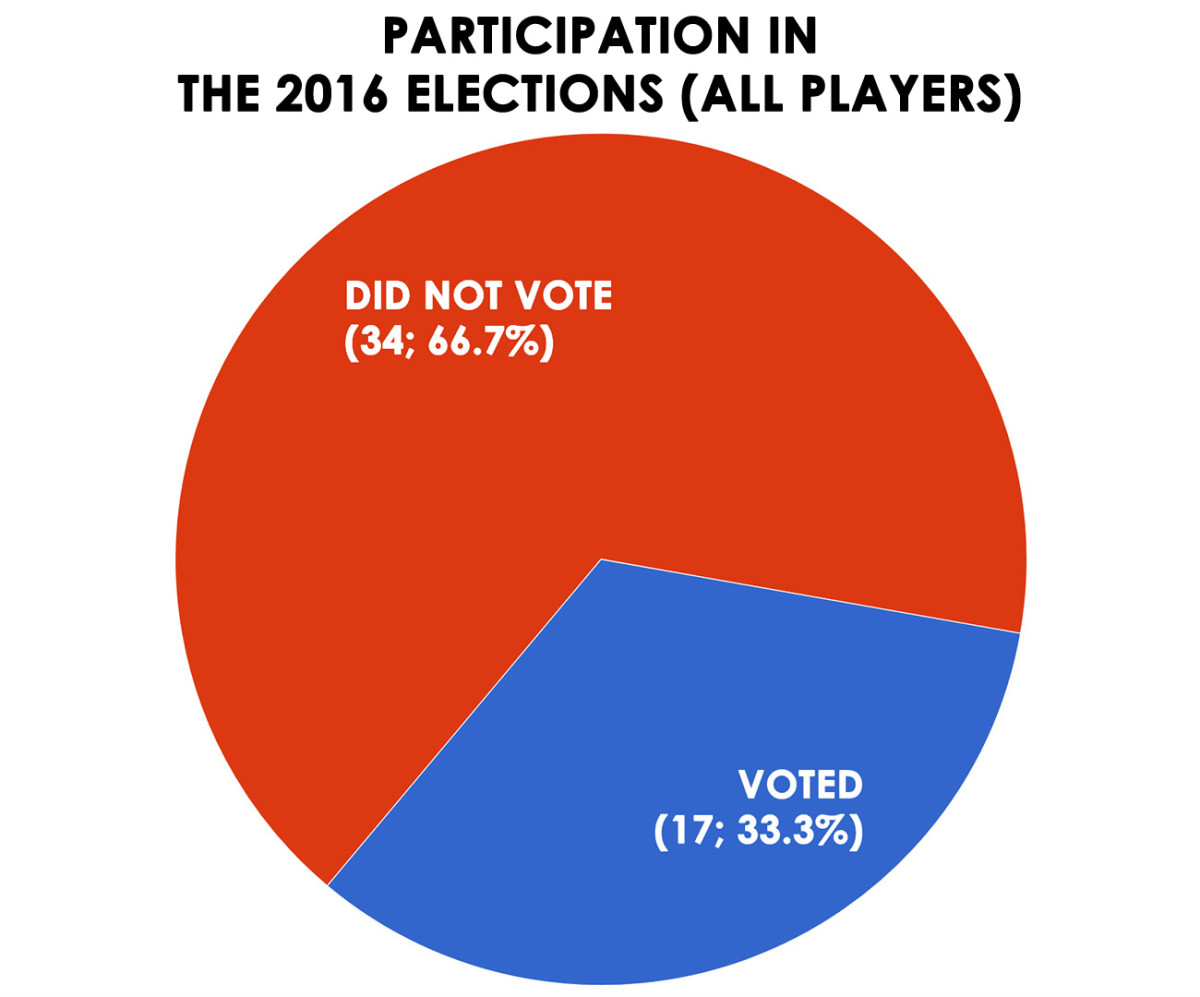
Some players expressed confusion as to how to obtain absentee ballots from their home states. Others said they had little interest in the political process. Okung suggested that many of his teammates and Americans at large are either “uninformed” or “misinformed.”
“In my case,” said the 29-year-old offensive tackle, “I felt like I wanted to vote because it’s my duty, especially if I understand the issues. I think a lot of people don’t realize that there’s power in voting, power in being informed.”
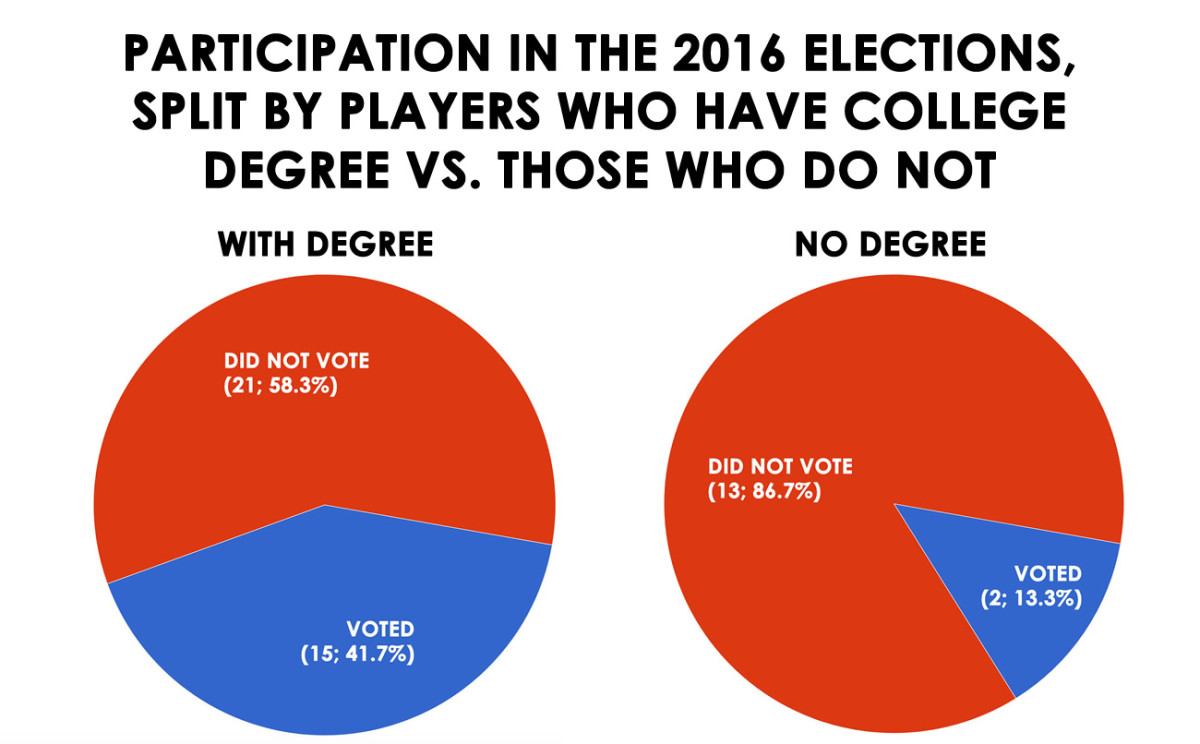
A 2015 survey found that 75% of U.S. adults consider religion at least “somewhat important," and 53% describe religion as “very important.” Eighty percent of the Denver Broncos said that their religion is “very important.”
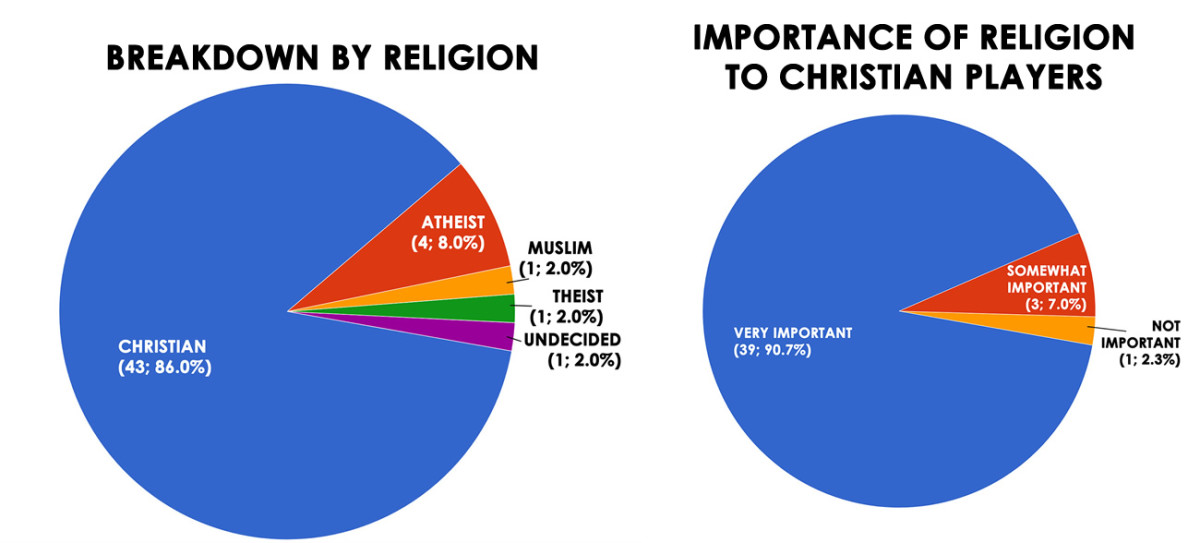
Multiple players cited the inherent risks of a career in pro football as a way of explaining the disproportionate number of players who consider religion very important in their lives, with each describing the extraordinary faith in a divine plan required to, for instance, return from an ACL injury or simply earn a roster spot in a highly competitive workplace.
Question or comment? Email us at talkback@themmqb.com.
